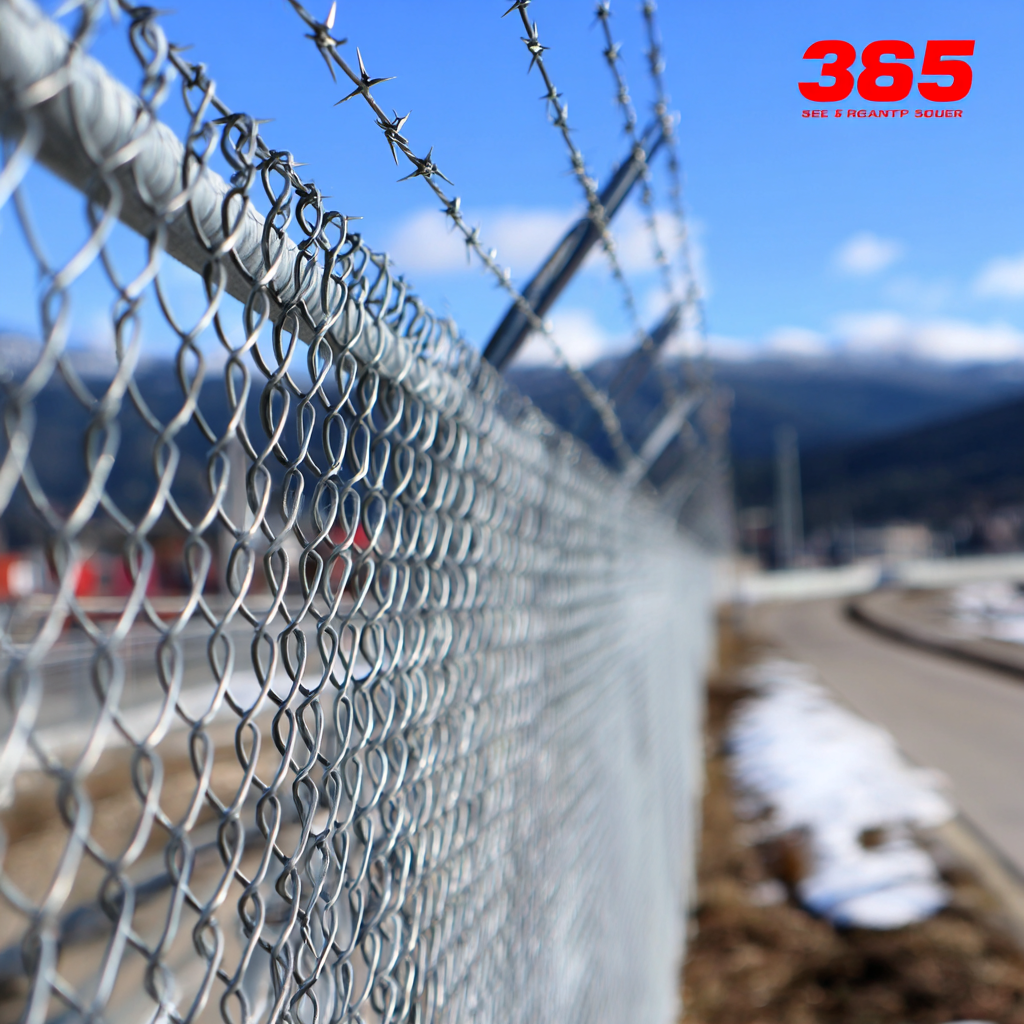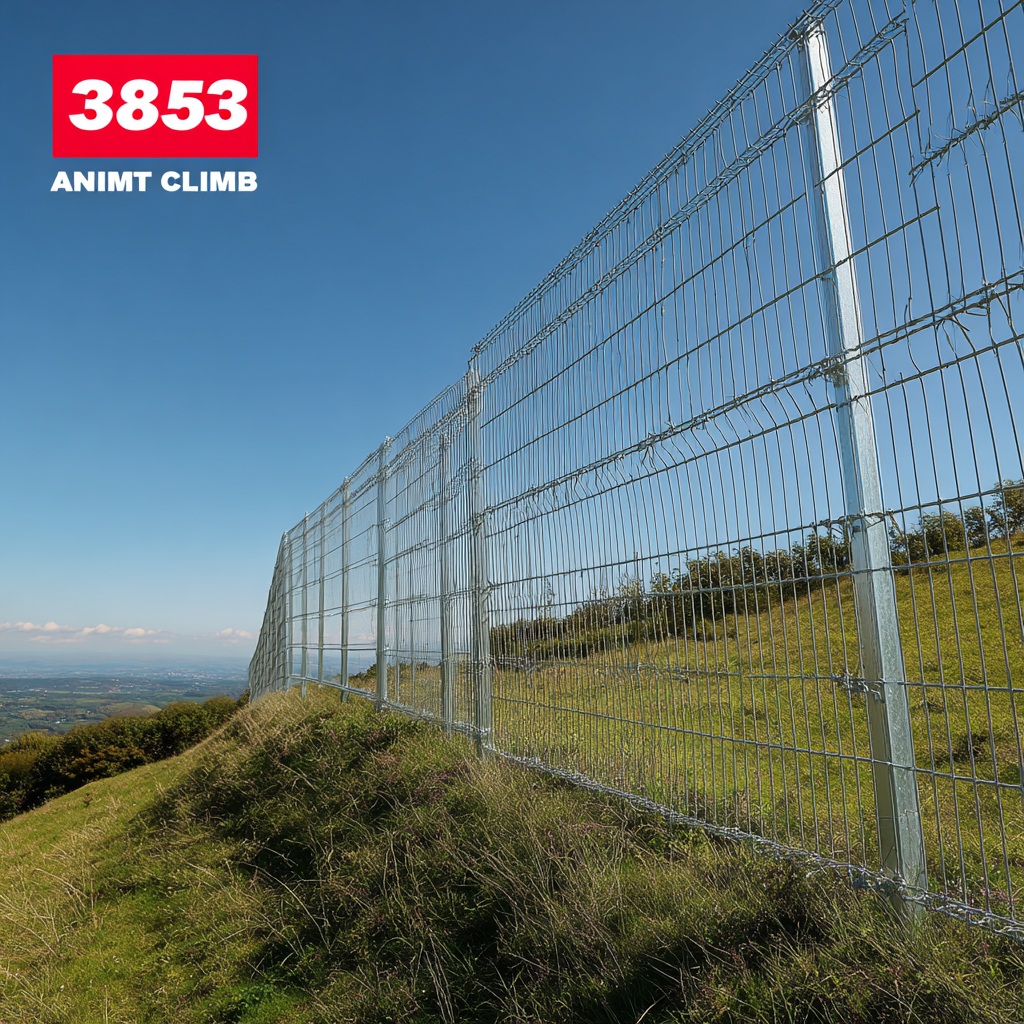Leave Your Message
-
Telephone
-
WeChat/ WhatsApp
-
Email
As we look towards 2025, the landscape of security solutions is set to undergo significant transformations, particularly in the realm of perimeter protection. Among the various options available, the 358 Anti Climb Fence stands out as a premier choice for those seeking robust deterrence against unauthorized access. This specialized fencing system, characterized by its unique design featuring closely spaced vertical wires and anti-climb features, not only enhances security but also blends seamlessly into modern architectural aesthetics.

In this blog, we will explore the latest innovations in 358 Anti Climb Fence technology, assess their effectiveness, and provide insights on how to select the right fencing solution for your specific needs. Whether you are a business owner, a property manager, or an individual looking to secure your premises, understanding the advancements and available options in 358 Anti Climb Fence will be crucial for safeguarding your assets in the evolving security landscape.
In 2025, the design landscape for 358 anti-climb fences is witnessing a remarkable evolution, driven by advances in technology and an increasing need for security. One of the most notable trends is the integration of smart technology, which enhances the functionality of these fences. Features such as motion sensors, integrated cameras, and remote monitoring systems are becoming standard. These innovations not only deter unauthorized access but also provide real-time insights to property owners, allowing for a proactive approach to security management.

Moreover, aesthetic considerations are gaining prominence alongside functional improvements. The modern 358 anti-climb fence is not just about security; it is also about complementing the architectural style of the surrounding environment. Designers are experimenting with a variety of materials, colors, and patterns to create visually appealing options that blend seamlessly with both urban and natural landscapes. This fusion of utility and aesthetics ensures that safety measures do not compromise the overall look and feel of properties. As such, when choosing the right 358 anti-climb fence, property owners should consider both the innovative features available and the design ethos that aligns with their personal or organizational identity.
When selecting the right materials for 358 anti-climb fencing in 2025, durability and security are paramount. The 358 mesh fence, often made from steel, boasts a unique configuration—which includes small apertures of 76.2mm x 12.7mm—that effectively deters climbing and cutting. The rigid steel structure provides an excellent defense against intrusion while maintaining visibility, a crucial element in surveillance applications.
Industry reports indicate that anti-climb fencing significantly enhances security measures, with specific features like a corrosion-resistant coating and robust construction further increasing its lifespan and effectiveness. The market has seen a rising trend, with over 1,175 products highlighting the growing demand for reliable steel mesh solutions. This continuous evolution in fencing technology suggests that innovations in anti-climb designs not only focus on physical barriers but also integrate advanced materials and engineering to consistently meet the security needs of different environments. Whether for commercial or residential use, understanding the benefits of various materials can lead businesses and homeowners to make informed decisions regarding their security investments.
The demand for anti-climb fences has surged globally as security concerns continue to escalate across various regions. According to a recent industry report by MarketsandMarkets, the anti-climb fencing market is expected to reach USD 4.7 billion by 2025, exhibiting a compound annual growth rate (CAGR) of 5.2% during the forecast period. This growth is driven by increasing investments in infrastructure and the need for enhanced security in residential, commercial, and industrial properties.
Regional trends illustrate varying demands for anti-climb fences. In North America, the rise in property theft and vandalism has prompted a significant uptick in demand, with a reported 22% increase in sales over the past year, as stated by Statista. Meanwhile, Europe is also witnessing a growing emphasis on perimeter security, fueled by rising concerns over urban crime rates. Countries like Germany and the UK are leading in adopting advanced fencing solutions, which integrate technology such as sensors and alarms to further deter unauthorized access. Understanding these regional market dynamics is crucial for choosing the right anti-climb fence that meets specific security needs while aligning with local regulations and preferences.

When considering the implementation of 358 anti-climb fences, cost-effectiveness is a crucial factor that cannot be overlooked. These robust fencing solutions have become increasingly popular due to their effective security features, but the budget required for installation and maintenance often raises questions among potential users. A comparative analysis of various 358 anti-climb fence innovations available in 2025 reveals significant differences in upfront costs and long-term value across different manufacturers and materials.
Investing in 358 anti-climb fences can yield varying degrees of cost-effectiveness depending on the specific context in which they are used. For instance, selecting options with higher durability and lower maintenance requirements can offset initial investment costs by reducing long-term expenses. Furthermore, examining warranties and lifespan estimates can provide insights into which fencing solutions deliver greater value over time. As 2025 introduces advanced materials and design innovations, businesses and individuals must carefully assess their security needs against their budget constraints to choose the right 358 anti-climb fence that not only deters intruders but also fits financially within their operational plans.
| Feature | Material Type | Height (ft) | Cost per Linear Foot ($) | Installation Cost ($) | Maintenance Frequency (Years) | Average Lifespan (Years) |
|---|---|---|---|---|---|---|
| Anti-Climb Design | Steel | 8 | 18 | 2000 | 5 | 25 |
| Enhanced Security | Aluminum | 10 | 22 | 2500 | 7 | 30 |
| Visual Deterrent | Composite | 12 | 25 | 3000 | 6 | 20 |
| Durability | Vinyl | 6 | 15 | 1500 | 4 | 15 |
When selecting the ideal 358 anti-climb fence, several critical factors must guide your decision. The 358 anti-climb fence, known for its robust design featuring 358 mesh (3 inches by 0.5 inches) and a thickness of 8 gauge, offers exceptional security against unauthorized access while maintaining visibility. According to industry reports, these fences have been shown to deter intruders effectively due to the difficulty of climbing over their tightly spaced mesh, with a documented reduction in security breaches by up to 76% in high-risk areas.
In addition to the basic specifications, consider the material quality and coating options that enhance corrosion resistance and longevity. Reports indicate that galvanized or powder-coated finishes can significantly extend the lifespan of a fence, minimizing maintenance costs. Furthermore, assessing the installation process is crucial; engaging with experienced suppliers can ensure compliance with local regulations and optimal alignment with your security needs. With these considerations in mind, choosing the right 358 anti-climb fence can provide peace of mind and enhance the overall security of your premises.


